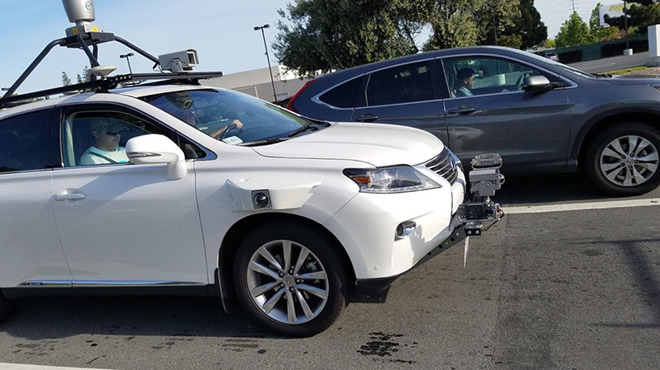Apple lobbies California DMV to keep self-driving car plans out of public eye
A letter from Apple to the California Department of Motor Vehicles is seeking alterations in test protocols and reporting requirements for automated vehicle testing, and also declares that the company is seeking to increase public acceptance of self-driving cars.
The letter from Apple, first spotted by Reuters is written by Director of Product Integrity Steve Kenner. It leads by seeking clarifications in what the DMV calls "disengagement reporting."
"Apple believes that public acceptance is essential to the advancement of automated vehicles. Access to transparent and intuitive data on the safety of the vehicles being tested will be central to gaining public acceptance," writes Kenner. "However, the current and proposed disengagement reporting requirements do not achieve this result."
Apple is requesting that disengagement reporting be tightened up, and exclude planned tests, the end of testing, operational constraints where the safety driver disengages the system, or other discretionary decisions made by the safety driver not made to prevent an immediate accident. Apple also requests that it not be required to perform "speculation about future events that have not occured" in describing the type of incident that would have happened without the disengagement.
According to the letter, a disengagement should only be defined as an unexpected event or failure that requires the safety driver to take control of the vehicle in order to prevent a crash or traffic violation.
Apple also requests clarification in language surrounding a safety driver's role during testing and development, plus a withdrawal of duplicate language excluding commercial vehicles from testing in multiple sections of the test authorization.
All of the Apple requests seem oriented to report less in the way of interactions by the autonomous system to California, and to the population at large. This doesn't appear represent any ulterior motive on Apple's part, beyond not giving competition a leg-up on the company's plans or information on technology through public filings required by law, such as this letter.
On April 21, a report revealed snippets of Apple's California Department of Motor Vehicles self-driving car application, offering insight into the company's autonomous vehicle project. Apple's full application was revealed a bit later that day, and incorporates a copy of the testing process it used to certify the six drivers who will pilot three modified 2015 Lexus RX450h SUVs, which have since been spotted on the road.
Included in the informational packet are instruction sets, training goals and diagrams for each of the following tests: low speed driving, high speed driving, tight U-turns, sudden steering input, sudden acceleration, sudden braking and lane change. Three drivers have worked at Apple's Special Projects Group for two years as hardware and software engineers, according to their LinkedIn profiles.
"Pilots" are expected to pass seven rudimentary tests prior to taking the testbed out for data gathering drives. Tests listed include low speed and high speed driving, as well as drive system intervention including tight U-turns, sudden steering input, sudden acceleration and sudden braking. Drivers also need to take action in the case of faulty software lane change requests called a "conflicting turn signal and action."
Apple expects its test system to be capable of maintaining in-lane speeds of at least 65 miles per hour, change lanes automatically, brake when required, and perform other basic functions.
Apple has long been rumored to be working on autonomous vehicle technology under the "Project Titan" aegis. The company reportedly abandoned efforts to create a full car from bumper to bumper in late 2016 when former project leader Steve Zadesky left Apple and handed the reins over to senior VP of Hardware Engineering Dan Riccio.
Project Titan was later transferred to longtime executive Bob Mansfield, who subsequently culled hundreds of employees and refocused the program on self-driving software and supporting hardware.
 Mike Wuerthele
Mike Wuerthele











 Malcolm Owen
Malcolm Owen
 William Gallagher and Mike Wuerthele
William Gallagher and Mike Wuerthele
 Christine McKee
Christine McKee
 William Gallagher
William Gallagher

 Marko Zivkovic
Marko Zivkovic







